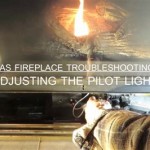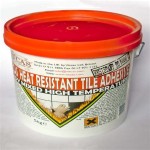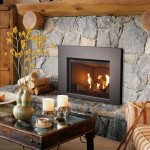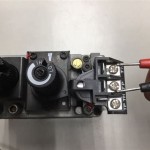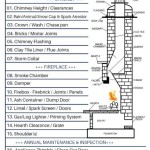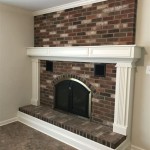Non-Vented Gas Fireplace Inserts: A Guide to Warmth and Efficiency
A non-vented gas fireplace insert is a convenient and efficient way to add warmth and ambiance to your home without the hassle of a traditional fireplace. Unlike vented fireplace inserts, non-vented units do not require a chimney or vent, making them ideal for homes that lack these features. This article will provide a comprehensive overview of non-vented gas fireplace inserts, exploring their benefits, features, installation considerations, and maintenance requirements.
Benefits of Non-Vented Gas Fireplace Inserts
Non-vented gas fireplace inserts offer several advantages over traditional fireplaces and vented inserts. Here are some key benefits:
- Energy Efficiency: Non-vented gas fireplace inserts deliver heat directly to the room, minimizing heat loss through a chimney. This efficiency translates into lower energy bills and a smaller carbon footprint.
- Installation Flexibility: The absence of a venting system provides flexibility in installation. You can install a non-vented insert in virtually any room, even those without a chimney.
- Convenience: Non-vented gas fireplace inserts are easy to use and maintain. They typically feature remote controls for convenient operation.
- Safety: These units are designed with safety in mind, featuring features like safety valves and automatic shutoff mechanisms.
- Aesthetic Appeal: Non-vented gas fireplace inserts are available in various styles and finishes to complement any decor. They can create a warm and inviting atmosphere in your living space.
Key Features and Considerations
When choosing a non-vented gas fireplace insert, consider these key features and considerations:
- BTU Output: BTU (British thermal units) are a measure of heat output. Choose an insert with a BTU rating that suits the size of your room. A higher BTU rating will heat a larger space more effectively.
- Gas Type: Non-vented gas fireplace inserts can run on natural gas or propane. Ensure that your home has the appropriate gas supply before purchasing.
- Log Set: Many non-vented inserts feature realistic-looking log sets that enhance the visual appeal. Consider the style and size of the log set to match your preferences.
- Thermostat Control: Some models include thermostat control that allows you to set the desired room temperature. This feature can help optimize energy efficiency.
- Safety Features: Look for safety features such as oxygen depletion sensors, carbon monoxide detectors, and automatic shutoff mechanisms.
- Efficiency Rating: Check the efficiency rating of the insert. A higher efficiency rating means the insert uses less energy to produce heat.
- Installation Requirements: Ensure that you understand the installation requirements for the insert. Some models may require specific clearances from walls and other combustibles.
Installation and Maintenance
Installing a non-vented gas fireplace insert typically requires professional assistance. A qualified installer will ensure proper installation, venting, and safety compliance. The installation process involves:
- Preparing the Fireplace Opening: The existing fireplace opening will need to be prepped to accommodate the insert. This may involve adjustments to the hearth, fireplace surround, and other components.
- Gas Line Installation: A licensed plumber or gas fitter will install the gas line to supply the insert with fuel.
- Insert Placement: The insert will be carefully positioned and secured within the fireplace opening.
- Electrical Connections: The insert will need to be connected to a power source for operation.
Routine maintenance is essential for ensuring optimal performance and safety. Regular cleaning and inspections will help prevent build-up of debris and potential hazards. Maintenance tasks may include:
- Cleaning the Burner and Log Set: Regularly clean the burner and log set to remove dust and debris.
- Checking the Gas Line: Inspect the gas line for leaks and ensure it is securely connected.
- Testing the Safety Features: Verify that all safety features, such as oxygen depletion sensors and carbon monoxide detectors, are functioning correctly.
Non-vented gas fireplace inserts offer a compelling combination of energy efficiency, convenience, and aesthetic appeal. By carefully considering the features and considerations outlined in this article, homeowners can choose the right insert to meet their individual needs and create a warm and inviting atmosphere in their homes.
:max_bytes(150000):strip_icc()/ventless-gas-fireplaces-4160746-hero-f9d4bdcd9bd446eb84406de306f790ba.jpg?strip=all)
How To Pick Out A Ventless Gas Fireplace

What Is A Ventless Gas Fireplace Experts In Gaithersbutg Md

Vent Free Inserts White Mountain Hearth

Procom Universal Ventless Firebox 170016 The Home Depot

ᑕ❶ᑐ Ventless Gas Fireplace Insert Disadvantages Of Use

Procom 26 000 Btu Vent Free Dual Fuel Propane And Natural Gas Indoor Fireplace Insert With T Stat Control 170082 The Home Depot

Monessen 33 Inch Solstice Vent Free Gas Fireplace Insert Intermittent Pilot

Vent Free Gas Fireplaces Inserts Stoves Napolis Godby Hearth And Home

Considering A Ventless Gas Fireplace Here S What You Need To Know Bob Vila

Superior 32 Inch Vent Free Gas Firebox Vrt3132 North Country Fire
Related Posts

